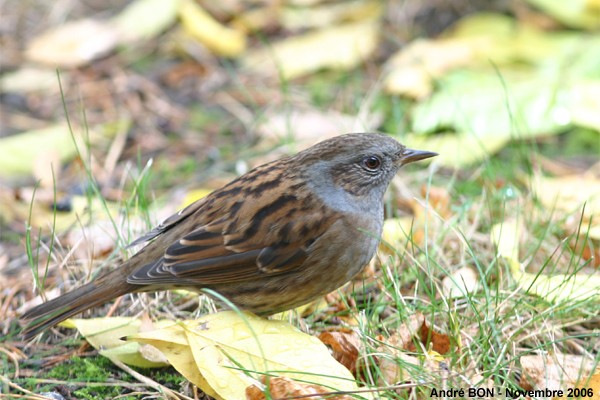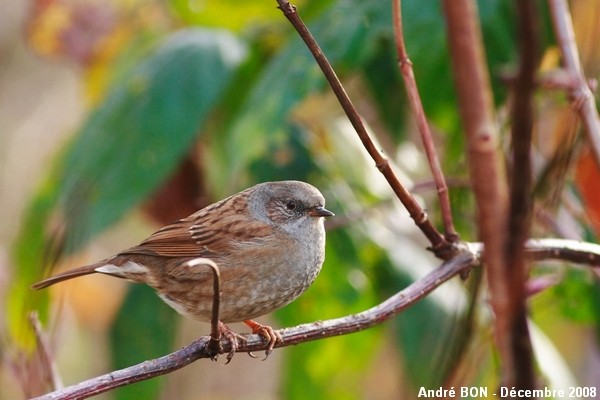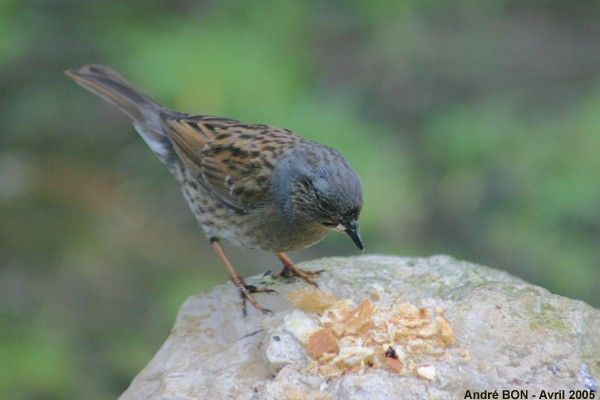


| Dunnock (Prunella modularis (Linnaeus, 1758)) |



|
|
Scientific name: Prunella modularis (Linnaeus, 1758) Common name: Dunnock Other names: Hedge Accentor, Hedge Sparrow or Hedge Warbler. French name: Accenteur mouchet Order: Passeriformes Family: Prunellidae Size: 14 to 15 cm, 20 g Habitat: Bushes, hedgerows, woodland edges, parks and garden (including in towns). Food: Insects and larvae in spring, small seeds in winter. Nesting: The female builds the nest close to the ground. There can be 2 or 3 broods per year (from 3 to 6 eggs) between March and July. Migration: Sedentary. In winter, some birds of eastern Europe move westwards, mountain birds move down to valleys. Geographic area: Temperate Europe except near the Mediterranean sea, temperate Asia, introduced in New Zeeland. |
The Dunnock is a small shy bird which slowly moves on the ground, usually alone. It differs from the female sparrow by its fine pointed bill. The head and the neck are grey, the upper side is dark brown streaked with black. Juveniles are strongly streaked on the underside. |
| [To know more about the Dunnock] [Next picture] [Top] |

|
I've got it! This picture is less blurred than usual. This small passerine bird, always moving and very shy, does not help me. |
| [To know more about the Dunnock] [Next picture] [Previous picture] [Top] |

|
I have shot this picture near a woodland edge. |
| [To know more about the Dunnock] [Previous picture] [Top] |

|
This picture was shot through the kitchen's window. Dunnocks are walking alone in the garden looking for insects, seeds or bread crumps. You can distinguish them from sparrows by their thin bill. I fact, sparrows used to be very numerous in 1991 when I arrived here. Today, they have almost disappeared from my garden. |